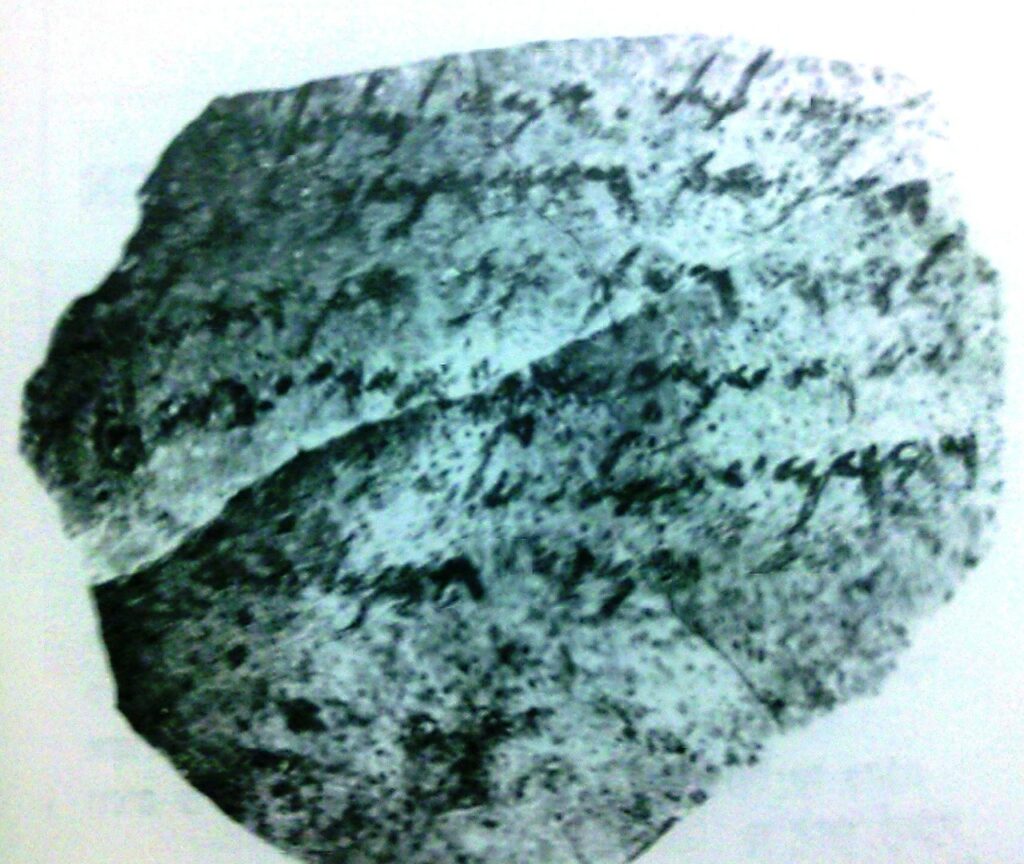Location
Horvat ‘Uza (Khirbet Ghazzeh) is located at the eastern end of the Arad Valley, southeast of Tel Arad, overlooking Nahal Qina. The site consists of a fortress with towers from the Iron Age and a small Iron Age settlement.
Identification
The site was first surveyed in the early 20th century and later excavated in the 1980s. It was initially considered a Roman fortress but later identified with biblical Kinah.
Historical Overview
Horvat ‘Uza, situated in the Negev desert near Tel Arad, has a rich history that spans several periods, most notably the Iron Age, Hellenistic period, and the Roman era. The site’s strategic location near Nahal Qina and its control over the ancient road linking the region to Edom and the Arabah made it an important settlement in these periods.
Biblical Context
Kinah: Based on chronological considerations and excavation results, Horvat ‘Uza is identified with biblical Kinah (Joshua 15:22). This identification is significant as it places the site within the territorial context of the biblical narratives.
Ramoth-Negeb: Another possible biblical identification is with Ramoth-Negeb (Joshua 19:8), mentioned as part of the territory of Simeon. This identification is supported by the strategic location of Horvat ‘Uza in the Negev and its role in regional defense.
Edomite Influence: The discovery of an Edomite ostracon suggests that Horvat ‘Uza had connections with Edom, particularly during the late First Temple period. This aligns with the biblical accounts of Edomite movements and interactions with the Judean kingdom.
Excavations
he excavations at Horvat ‘Uza were conducted over several years, starting in the summer of 1982. The initial season was led by I. Beit-Arieh and B. Cresson, representing a joint expedition from the Institute of Archaeology at Tel Aviv University and Baylor University. Additional excavation seasons were held from 1983 to 1986 and again in 1988. These excavations focused mainly on the summit of the mound, including various areas designated as A, B, D, and Y, as well as on the eastern slope and nearby plains.
The Edomite ostracon from the ruins of Uza


The Edomite Ostracon from Horvat Uza is a letter about an ostracon in Edomite, which was discovered in an archaeological dig led by Professor Yitzhak Beit Aryeh from the Institute of Archeology (Tel Aviv University) at Horvat Uza, an archaeological site in the east of the Arad Valley. The inscription is one of the only and most complete in the Edomite language. The astracon was broken into four pieces. It is written on the outside of a jar or jug fragment. The inscription is written in Aramaic script in ink on pottery. The words are separated from each other by dots. The inscription was deciphered with the help of Yosef Noah and dates to the beginning of the 6th century BC
Said to the king, said to confuse
How are you? And your blessing
to Kos And now give the food
Asher Achaima stood […
And he raised Saul on the altar of Kos
… The food will be bitter
Findings
Iron Age:
- A large fortress (51 by 42 m) from the 7th century BCE was discovered, surrounded by a wall with ten outer towers and a revetment. The gateway and towers were notable features.
- The fortress courtyard contained rooms and a complex of buildings and streets, including a platform that might have been a high place.
- Evidence of a violent conflagration was found in some rooms, indicating the fortress’s destruction.
- A planned settlement occupied the bank of the wadi, with buildings constructed on terraces due to the steep gradient.
- Pottery characteristic of the Negev at the end of the First Temple period was found, along with 29 ostraca and a jar bearing inscriptions.
- The Edomite letter found among the ostraca suggests that the fortress fell to the Edomites around the time of the First Temple’s destruction.
Hellenistic Period:
- The fortress was reoccupied between the late 3rd and late 2nd centuries BCE, part of the fortifications of southern Idumea.
- Major changes were made to the fortress, including the construction of new rooms and a large stone-faced silo.
Roman Period:
- The fortress was part of the Roman line of fortifications (limes) and underwent various modifications.
- Rooms from the Hellenistic period continued in use, with some being restored and minor changes made.
Sources
Stern, Ephraim-New Encyclopedia of Archaeological Excavations in the Holy Land 4-Israel Exploration Society (1993)

